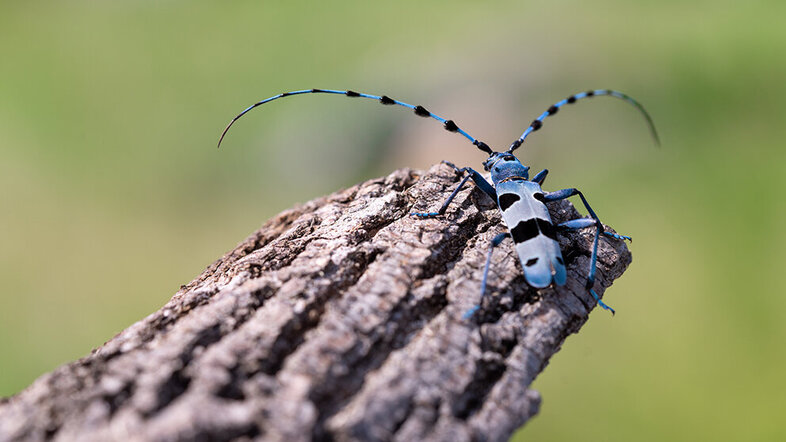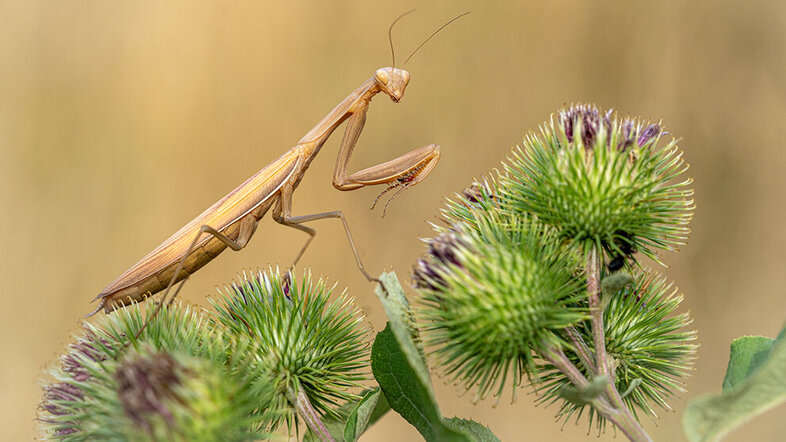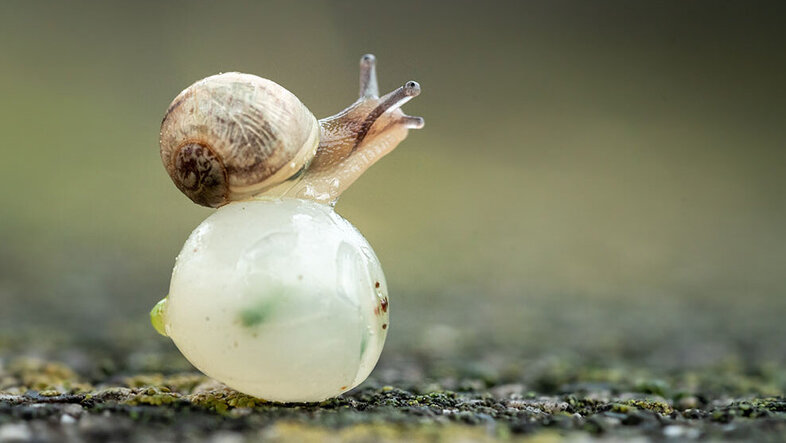Nature watchers bring Viennese graveyards to life
The elusive tri-coloured European hamster is normally difficult to spot. Yet these critically endangered critters are surprisingly at ease in the Vienna Central Cemetery, frolicking openly between tombstones and visitors. "We have a lot of sightings where hamsters try to steal a candle from a grave and try to push it in the burrows," says Thomas Filek in an interview with wildlife filmmaker Hannah Stitfall at BBC Earth, "they can eat it because it’s a source of fat and they can digest it," explains the paleontologist at the University of Vienna.
Now open: Gallery with photographs from the Citizen Science Project
From 4 October 2023, visitors to the Vienna Central Cemetery can visit the longest outdoor photo gallery in the city. The exhibition shows animal photographs taken as part of the Citizen Science project "Biodiversity at the Cemetery". The gallery starts at Gate 2 of the Central Cemetery and is expected to be on display until March 2024. The visit is free of charge. Find out more here (in German).
Results "Biodiversity at the Cemetery"
View the first results of the Citizen Science project "Biodiversity at the Cemetery" here (in German). Since 2021, 170 animal and around 200 plant species have been documented at the Vienna Central Cemetery alone.
Participate and help protect the city's biodiversity
- Visit a Viennese cemetery and look for plants, animals, insects or fungi.
- Send a photo to baf.pal[at]univie.ac.at, use the sighting form at Stadtwildtiere.at, or upload your findings from the Stadt Wildtiere smartphone app (Google Play Store and Apple App Store).
- Include information about the time, place, and type of observation (e.g., remnants, individuals, sounds) of your sighting.
- The project organizers will help you identify the species and you will be contributing to the protection of Vienna's biodiversity.
Book a hamster tour
The Friedhöfe Wien GmbH is also offering a hamster tour at the Central Cemetery of Vienna (in German).
The Vienna Central Cemetery (Wiener Zentralfriedhof) is a bucket-list destination thanks to its famous historical residents and unique architecture. One of Vienna's best-kept secrets, however, is that it is also a hotspot for wildlife watching. A place of tranquillity and remembrance for the dead, the old cemetery has become a sanctuary for life — many creatures, including those endangered and at risk, are able to thrive in densely populated urban areas because of the quiet oasis. Some have adapted to unique features of this environment, like the wild hamsters and their candles.
Powered by citizen science
"Foxes, deer, hamsters, numerous bird and insect species. The list of animal cemetery inhabitants in Vienna is long," explains Thomas Filek. Together with palaeontologist Doris Nagel, he coordinates the citizen science project "Biodiversity at the Cemeteries" (Biodiversität am Friedhof, BaF), which is funded by the City of Vienna as well as the Wiener Friedhöfe GmbH.
To uncover the actual biological biodiversity of Vienna's network of cemeteries, the project team relies on the support of visitors as "citizen scientists" to map out a comprehensive picture of species diversity. In the last two years, citizen scientists and project researchers have collectively documented a dozen species of mammals, nearly 80 types of birds, and altogether hundreds of reptiles, amphibians, snails, and insect species in 46 cemeteries across 497 hectares. "We now know that there are more than 300 different species of plants," says Filek, referring to the diverse vegetation cradling Vienna's eternal resting places.
"The cemetery staff can report sightings from time to time, but only when visitors participate over the course of a year can we really generate a comprehensive database," says Doris Nagel, "for instance, of migratory birds." Members of the public, especially the expert birders of Vienna, have responded enthusiastically to the project, sending photos and sighting forms by e-mail or through the Wildtiere app run by cooperation partner "Urban Wild Animals" at Stadtwildtiere.at.
What is citizen science?
Anyone can participate in scientific research by working with scientists on "citizen science" projects. These are projects that rely on public participants to crowd-source, collect, or analyze new data. In more "participatory" projects, non-scientists can even help define and develop the research questions. “Biodiversity at the Cemeteries" is one of the citizen science projects at University of Vienna.
Schools are also cooperating with the scientists to document biodiversity in their nearby cemeteries, reports Thomas Filek, "the project tries to motivate young people to engage with science through citizen science research." Students can engage in a range of scientific methods in the field and thus become immersed in the process of biological research. Some of these skills include mapping, collecting, measuring, documenting, photographing and data analysis, according to Filek, Nagel as well as colleagues Viktoria Frey and Richard Zink at the Konrad Lorenz Institute of University of Veterinary Medicine Vienna.
Mapping out Vienna's corridors of nature
"The aim is to obtain a comprehensive overview of the biological diversity on Viennese cemeteries," explains Thomas Filek. "Only then can we assess whether these oases of tranquillity are not just a last retreat for species in the city, but also corridors within a network of increasingly fragmented nature."
Cemeteries are important microhabitats in urban areas. They are "stepping stone" biotopes that provide a bridge between habitats, especially for the lower vertebrates, insects and molluscs. To map out a network of nature in urban environments, the researchers are also documenting creatures that are generally overlooked, such as fungi, and encourage participants to record remnants such as animal faeces and hair.
Join the quest to document Vienna’s biodiversity
Filek and his team are supported by Wiener Friedhöfe GmbH, a committed partner managing 46 of the 55 cemeteries in Vienna. They are currently planning an outdoor exhibition of sighting reports with images taken by their photographers and citizen scientists. High-resolution photos of cemetery wildlife are also available for purchase as a perpetual wall calendar: "Hidden Life at the Cemetery" (Verborgenes Leben am Friedhof). More images and reports of new findings can be found on the project’s Instagram and Facebook accounts.
They are excited about the next steps. "We are planning a larger project on animals at night, to see how animals live in the dark." They are also interested in zooming in on the microcosm, to focus more on insects and plants. The public is invited to continue to participate in the project and contribute to the protection of the city’s biodiversity.
An older version of this article appeared here in the uni:view magazine (2021-10-28).
- Project website at the Department of Palaeontology at the Faculty of Life Sciences (in German)
- "Biology at the Cemeteries" on the Austrian Citizen Science platform
- “Hidden Life at the Cemetery” calendar (webshop)
- Trails of hidden life - Involving Citizen Scientists to show the biodiversity at Viennese cemeteries" (Proceedings of the Austrian Citizen Science Conference 2022) (PDF download)
- "Biology at the Cemeteries" on Facebook
- "Biology at the Cemeteries" on Instagram
- Project Stadtwildtiere.at (in German)
- BBC Earth interview with Thomas Filek (video)

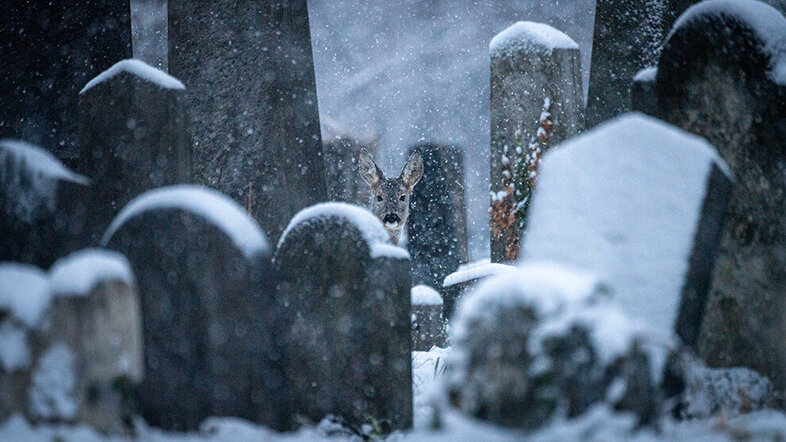
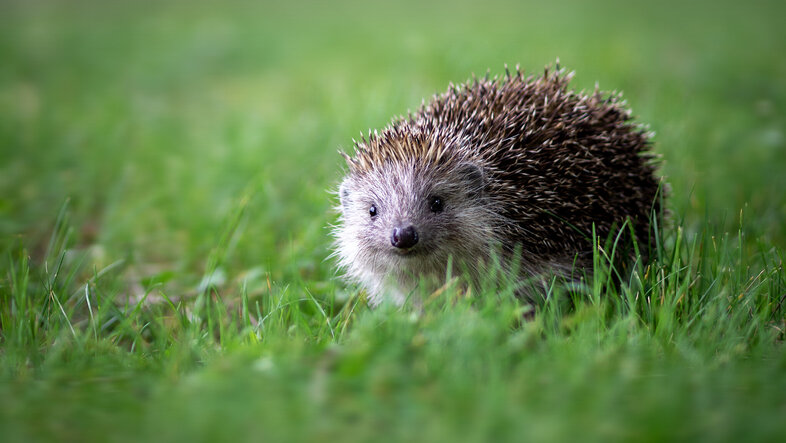
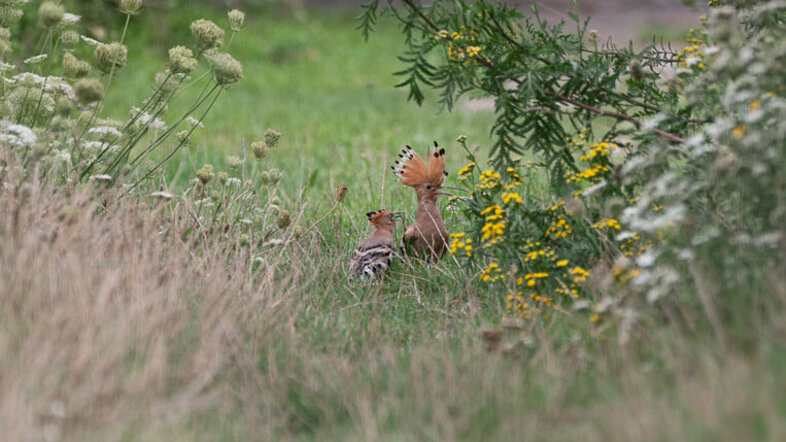
![[Translate to English:] Long-eared Owl (Asio otus) [Translate to English:] Close up photo of an owl with prominent "ears" sitting on a tree branch](/fileadmin/_processed_/7/7/csm_Owl2_small_6152645091.jpg)
